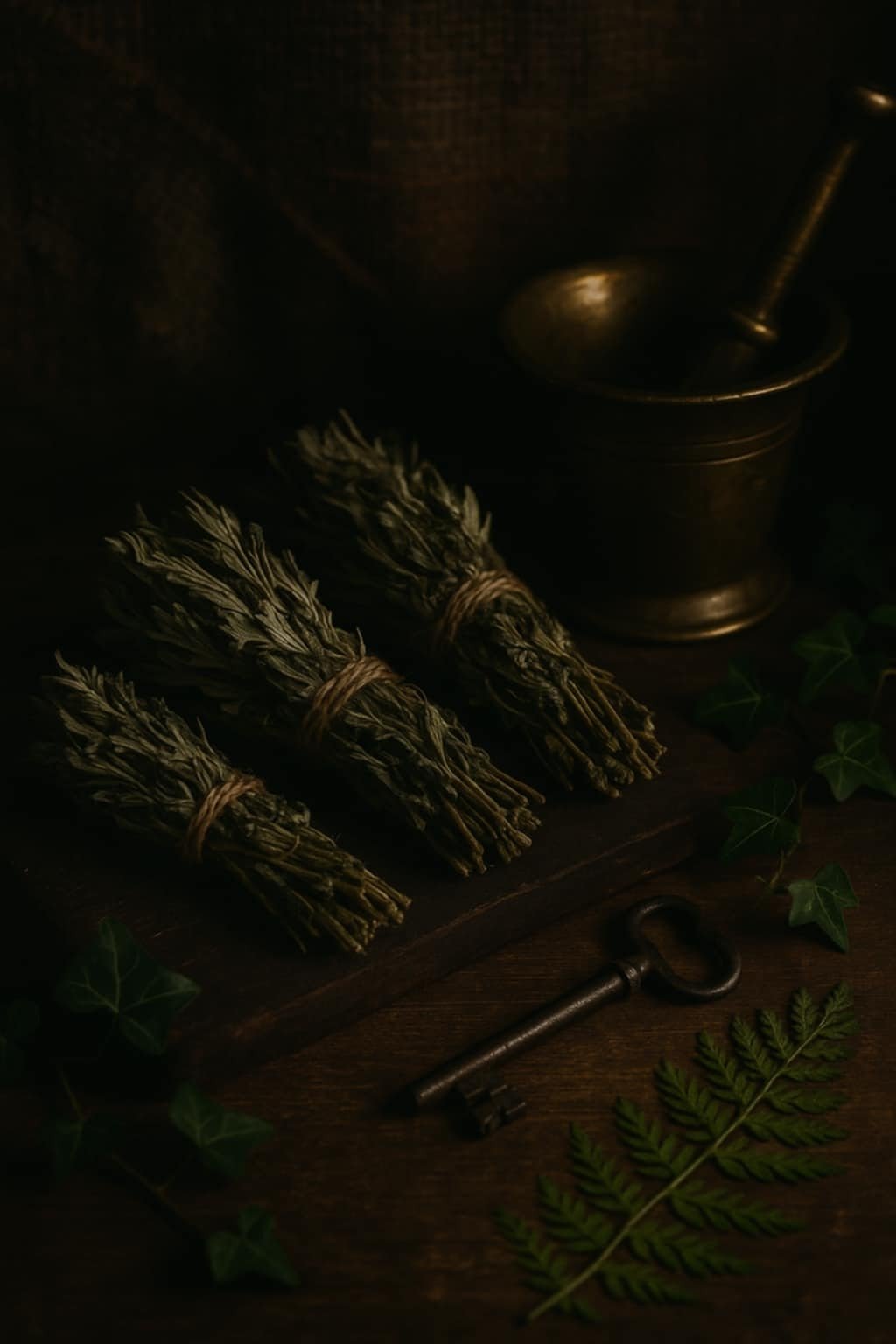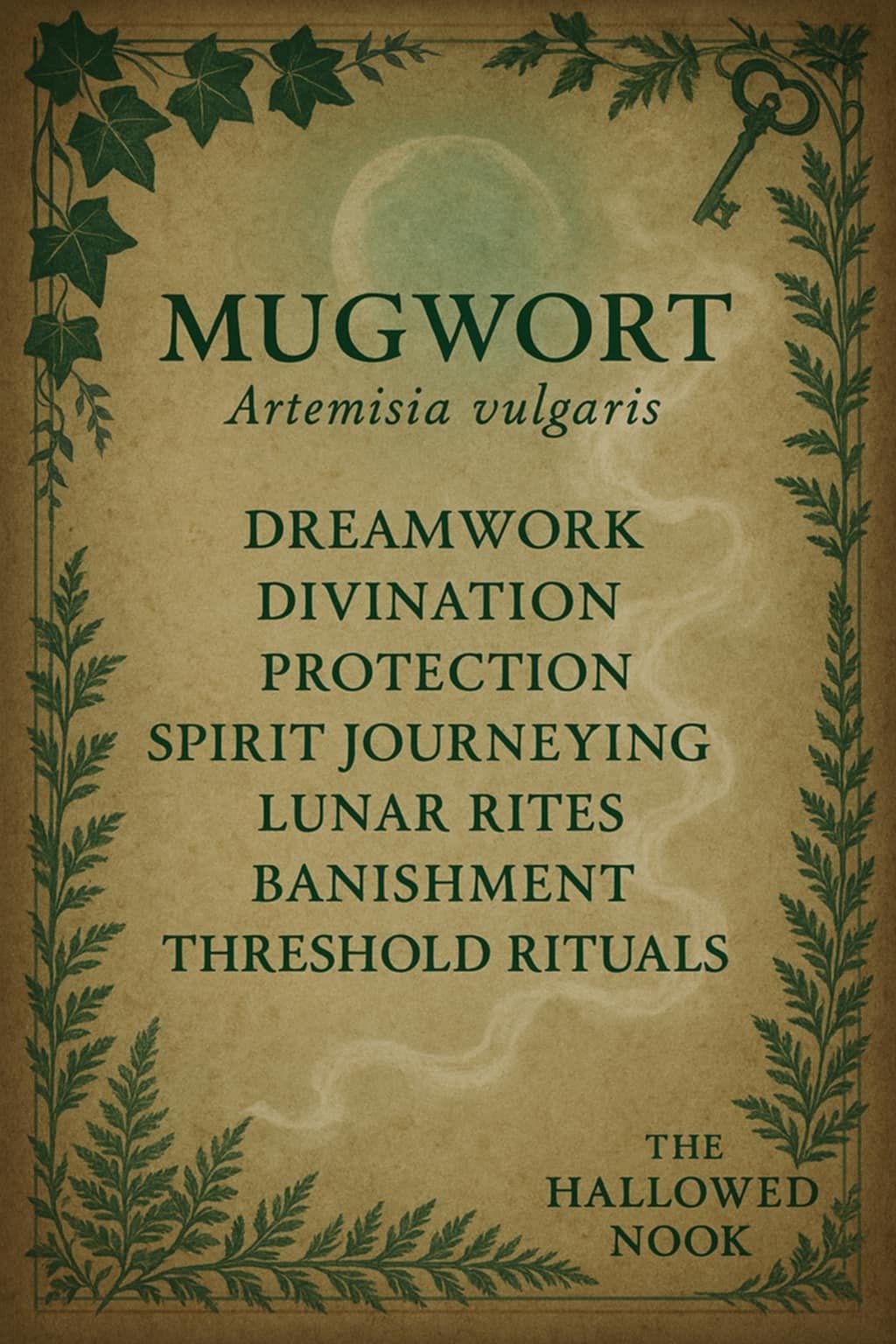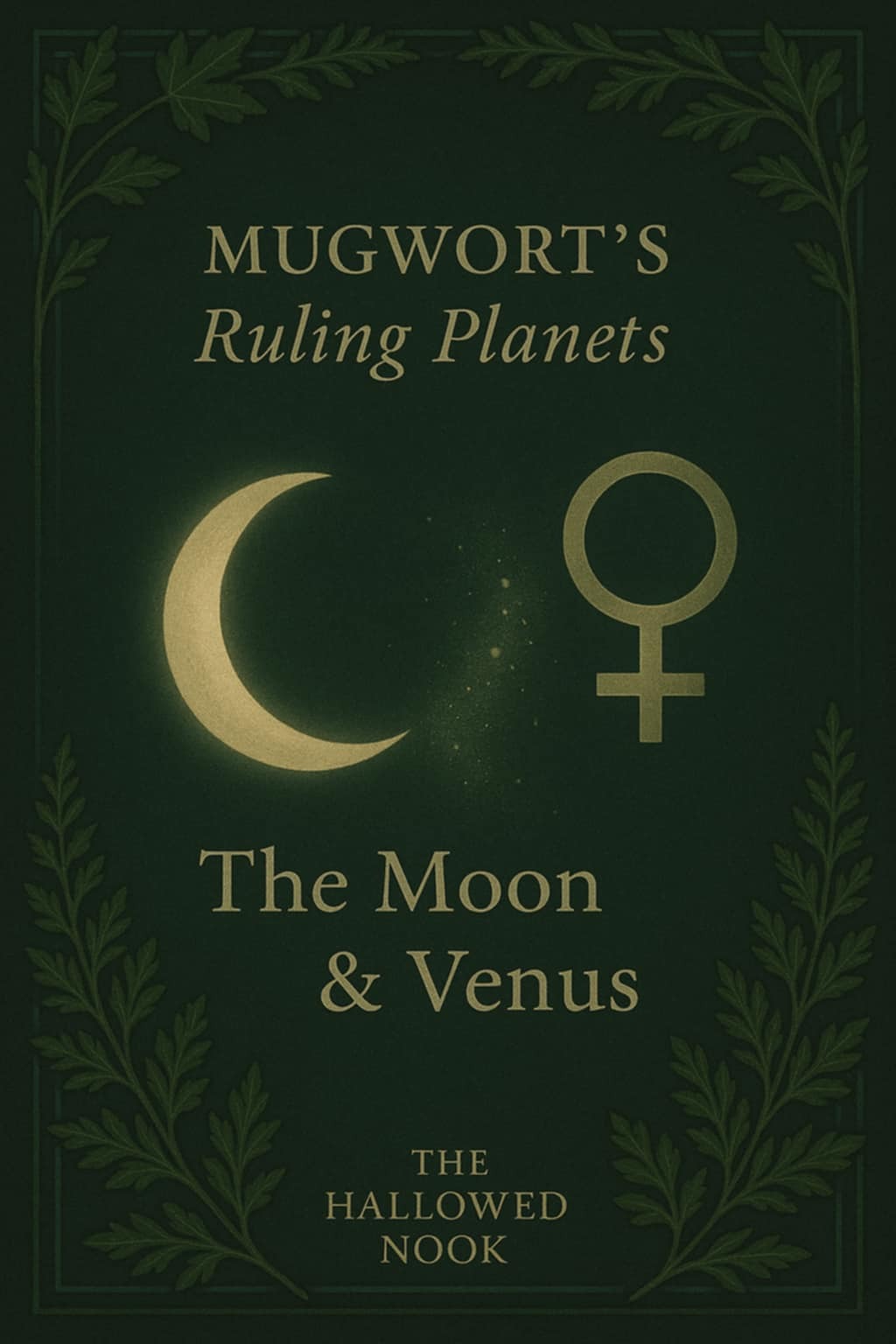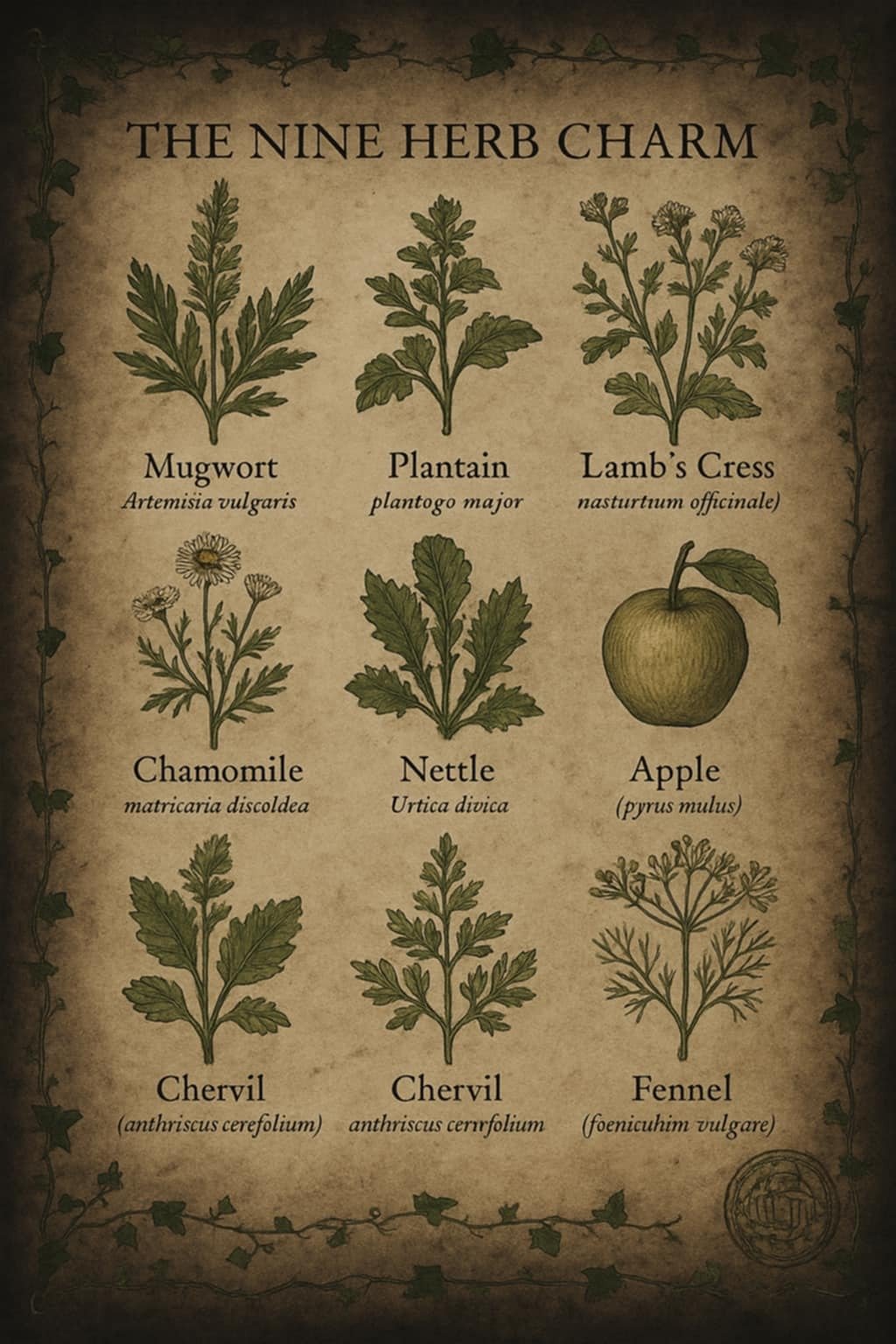
Mugwort
(artemisia vulgaris)
First of the Nine. She who walks the veil.
Mugwort has long stood as a Guardian of Thresholds - growing where the hedge frays and the old paths call. In English folk magick, she was worn, burned, brewed, and bound: a herb of protection, prophecy, and pilgrimage.
Found along waysides and footpaths across the British Isles, Mugwort is one of the most enduring allies in the cunning craft. She is the herb of dreamers and walkers-between. Used by wytches, healers, and hedge-riders for centuries.
Common Names
Cronewort, Old Man, Sailor's Tobacco, Wyld Wormwood, Felon Herb, Shepherd's Herb, Shepherd's Leaf, Motherwort, Maiden wort, Solstice Girdle, Old Woman, Womb's wort,
Folk Names & Titles
The Dreamer's Herb, She Who Walks the Veil, The Wytches Companion, The Hedge-Riders Companion, Cingulum Sancti Johannis (The Belt of St John), Una,
Element
Air & Earth
Earth - Often seen as Grounding and rooted. Connected to the Earth's healing properties
Air - Promotes Psychic connection and vivid dreams connection to the ethereal & airy realms
Habitat
Wytch-lanes: Found along old footpaths, between fields, once believed to be trodden by spirits, the Fae, and the Dead.
Hedgerows, Wastelands, & the edges.



Lore & Legacy
First named in the Anglo-Saxon Nine Herbs Charm; worn at Midsummer, burned to cleanse and protect, used in charm bundles and wytch bottles. Traditionally used to anoint and protect travellers and dreamers alike. Protects against fatigue, injury & Poisons.
Modern Lore
Still she walks the dreaming paths, unchanged beneath electric skies.
From potion to pillow, from roadside weed to healer's ally, Mugwort remains the wytch's herb of choice. Smoke carries through homes and studio alike, a bridge between intuition and craft. Once bound to moonlight and mystery, Mugwort endures, the seer's leaf, the night's companion.
Native Lore
Plant of Boundaries and Liminality

Calendar Dates
Protection against misfortune and ill health if gathered on St John's Eve (June 23rd/24th)
Full Moons
Summer Solstice, Samhain
Keeper's Note
Mugwort works best when trusted, not tamed. Keep close to the bed, the mirror, or the threshold, wherever the veil feels thin.
Burn or brew with intention, never haste, it opens only what the spirit is ready to see. Treat as the whisper before the dream, and the path will unfold in its own time.
